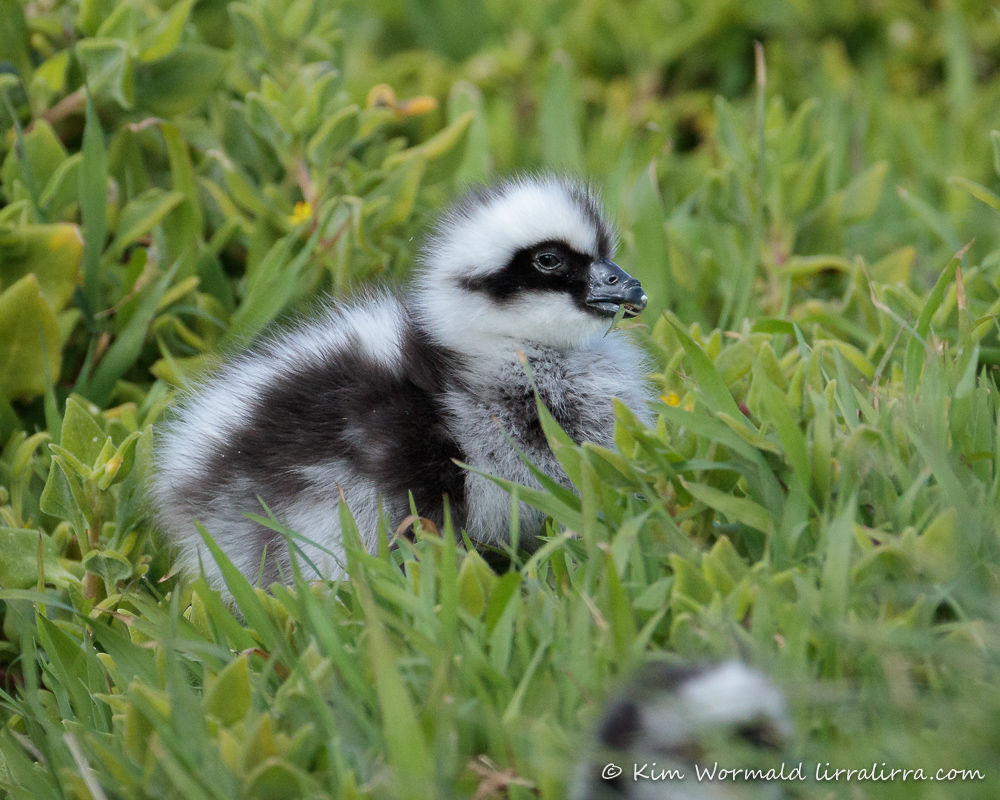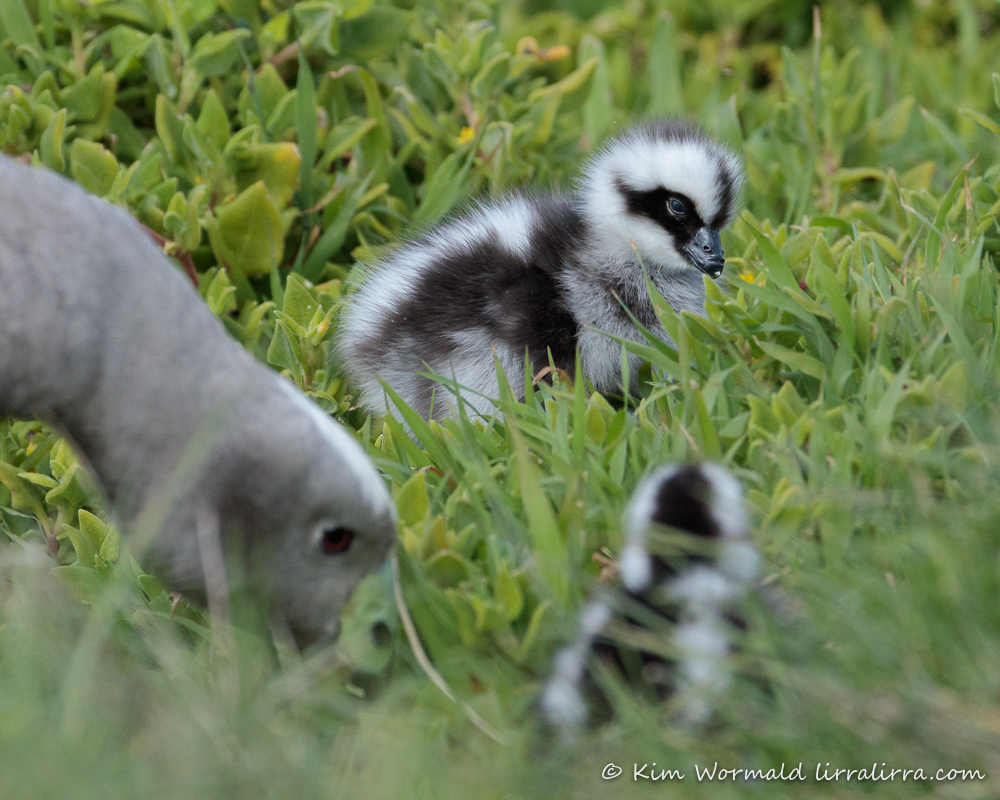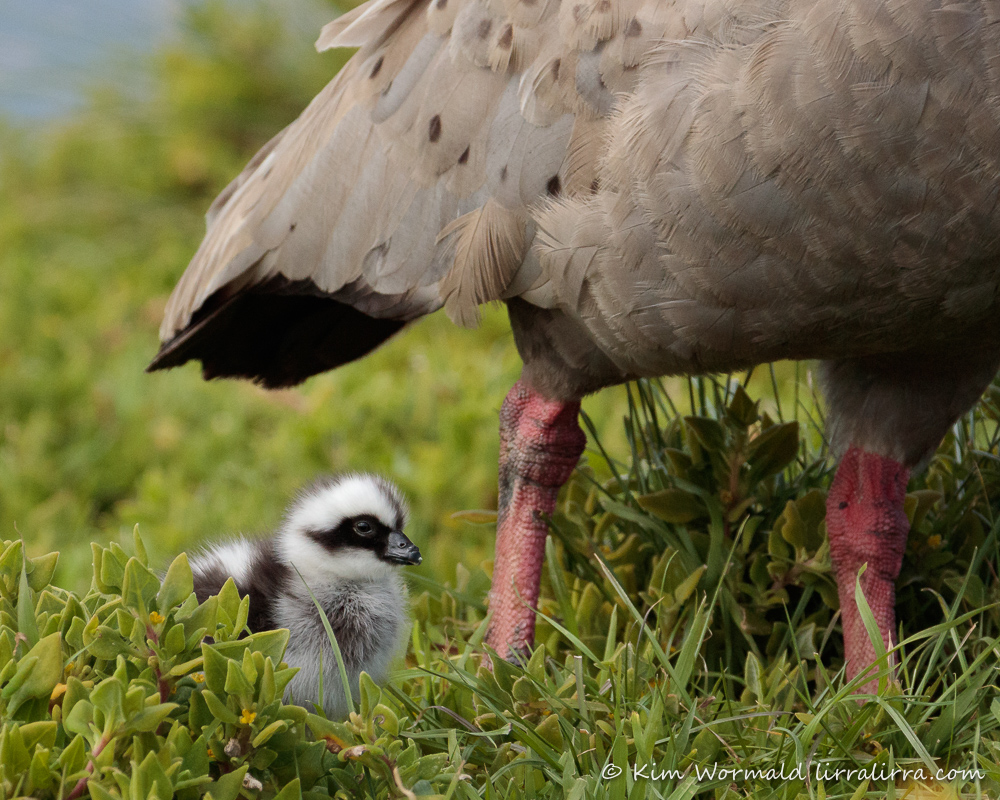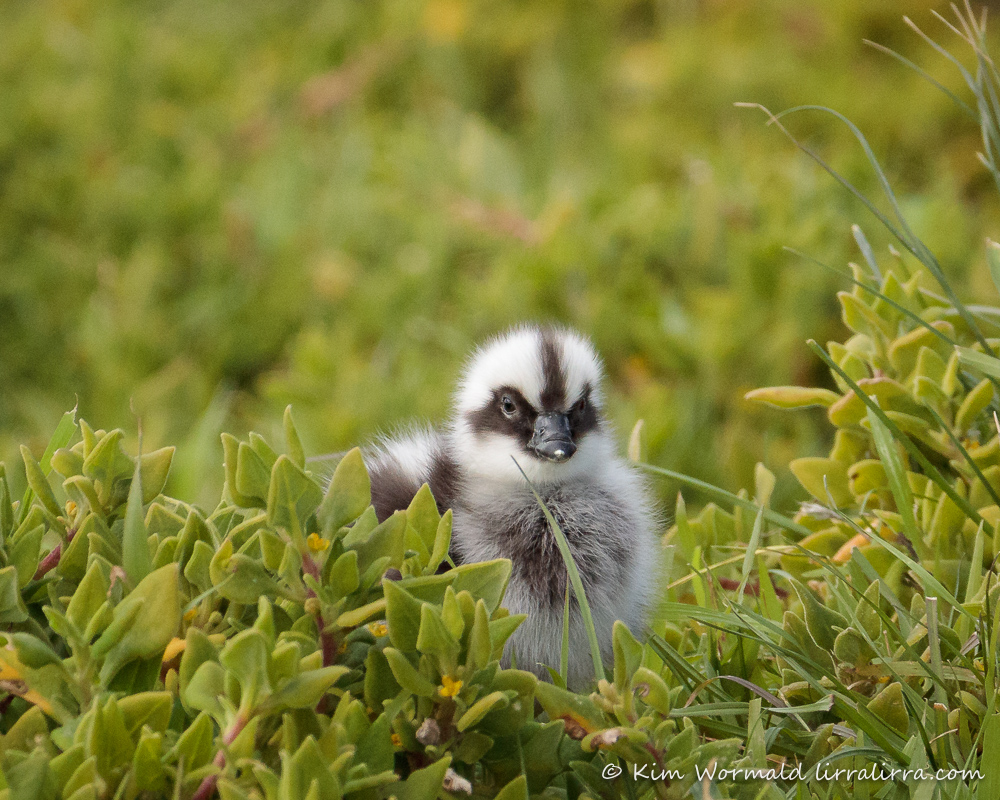Last week a friend and I saw a Cape Barren Goose behaving strangely on a clifftop at Phillip Island; it appeared to be alone but was scanning the sky and looking around rather than resting or foraging. We drove slowly and were lucky to notice its mate sitting among the saltbush on a well-hidden nest.
Cape Barren Goose (Cereopsis novaehollandiae) – gosling
1/1600, f/8.0, ISO 1600
The following morning both adult geese were foraging beside the nest. We watched from a distance and soon saw some tiny heads peeking above the greenery. Cape Barren Geese are large, grazing birds and their little ones were already busily finding their own breakfasts.
What we didn’t notice at the time was the tiny egg tooth on the end of each gosling’s bill.
Cape Barren Goose (Cereopsis novaehollandiae) – gosling
1/1600, f/8.0, ISO 1600
The egg tooth is a remarkable structure that enables chicks to break out of their eggs. When the embryo is ready to hatch it can no longer absorb oxygen through the shell and uses the egg tooth to break a hole in the air sac at the broad end of the egg. It uses the released oxygen as it begins the hatching process, gradually working its way around the egg, pecking at the shell with the egg tooth. It gets the strength to do this from a pipping muscle at the back of its neck.
The egg tooth in birds, reptiles and monotremes is either reabsorbed or falls off shortly after hatching.
Cape Barren Goose (Cereopsis novaehollandiae) – gosling
1/1600, f/8.0, ISO 1600
The geese foraged towards us, which is always a great sign as it means the birds I am photographing are not bothered by me or my camera. I rarely shoot with other bird photographers but I occasionally see people walking towards birds to try to get a shot. From what I’ve seen they tend to spook the birds and probably add to their collection of birdbot images. I much prefer to wait at a distance and hope the birds will forage towards me. Sometimes they do and sometimes they don’t, which means I might miss out on shots altogether or I might be lucky enough to capture some beauties of birds behaving naturally.
The image above shows the egg tooth quite clearly, along with a sense of scale showing how tiny the goslings were.
Cape Barren Goose (Cereopsis novaehollandiae) – gosling
1/1600, f/8.0, ISO 1600
I could hardly believe my luck when this little one appeared in mini-clearing amid the saltbush.
A few decades ago this species was almost extinct; they are still one of the world’s rarest geese species. I feel extraordinarily grateful to all the dedicated scientists and volunteers who have worked so hard to keep Cape Barren Geese on the planet.
Happy birding
Kim
~ thank you for visiting and commenting
~ use the subscribe box to receive a free weekly email when lirralirra is updated





Brilliant!
It was such a neat sight, I could hardly stop smiling.
Do you know what happens to the egg tooth as the chick matures? Thanks for lovely pics.
Hi Debbie, the egg tooth either wears off or falls off shortly after hatching. I’m imagining that the egg tooth of the CBG is such a sturdy little thing that it might be one of the ones that falls off.
Wonderful images. I agree, a lot of luck and patience is required when photographing our feathered friends :-). Also extremely important not to spook them especially when young birds are around as this can have devastating consequences.
Thanks for explaining the egg tooth feature. Isn’t nature absolutely amazing? Well Done!!
I feel lucky to have been a birder since childhood. It helps me to ‘read’ a bird’s comfort level and avoid stressing them. I like images where the birds are relaxed and behaving naturally. To me (and you) the bird is always more important that the image
Wow they are sooooo cute and the little egg tooth is fascinating. They really are tiny. I’ve never seen CBG chicks before. Great shots!
Thanks Alyssa. I’ve seen some pretty tiny CBG bubs before but never any as brand new as these little ones.
Great pics and lovely information, learnt something new again Kim cheers Janele 🙂
That’s great Janele, it was so cool to see each egg tooth so clearly. It was a lucky day
Another great shot Kim. It shows the size of the gosling compared with “mum” so well.
Thank you Joyce. I like the way the parent’s tail reminds me of an umbrella protecting the gosling.
Amazing photography by an amazing photographer!❤️
Aw thank you Katharina, I was very lucky x
Absolute feathered enchantment. And how lucky to be on the scene early enough to see the egg tooth. I suspect I would have been beside myself with joy.
I didn’t see the egg tooth when I was taking the shots but was definitely beside myself when I loaded them to the computer.
great shots kim. and a very interesting post. they are cute little guys
Thanks Glenn. I always think they look like mini goats when they’re grazing.
Beautiful photos. Thank you.
Thank you Meredith, it’s always a pleasure to share images of beautiful birds
Really beautiful photos Kim…I love them.
That’s lovely Carole, thank you
Great shots Kim – Love the ‘egg tooth’ info & wonder if other baby birds also display this for a time?
Hi Annette, other birds (along with reptile and monotremes) do use an egg tooth to facilitate hatching. It was such a pleasure to spend time watching them.
Wow! Exciting captures. I bet your adrenaline levels were high.
Thanks David. They’d have been even higher if I’d known about the egg tooth (‘egg teeth’ sounds odd, so does ‘Cape Barren Geese’) while I was with them.